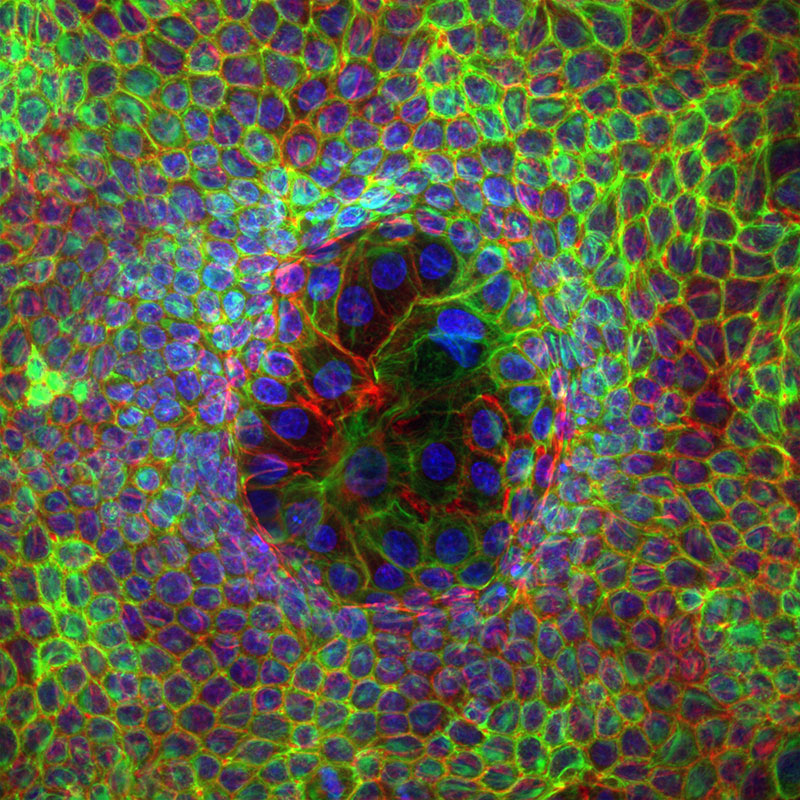One of the most enviable features of superheroes is their ability to stretch their bodies beyond imaginable limits. In this study we discovered that our cells can do just that.
Together with the team led by Marino Arroyo (UPC), we developed a new approach to subject epithelial tissues – the thin cellular layers that cover internal and external surfaces of the body – to very large deformations, up to four times their original size. These cellular layers are fundamental to life, as they protect the body from radiation, pollutants and pathogens. They’re also responsible for gas exchange in the lungs, absorption of nutrients in the gut, and excretion of urine in the kidneys.
Most materials are unhappy during stretching. As they become progressively deformed, they’ll want to go back to their unstretched state, like a rubber band, or may even break as the tension increases. We found that epithelial sheets have a different and unusual mechanical behavior. To our surprise, tissues did not break during stretching, and they were able to recover their initial size in a fully reversible way when unstretched. Even more surprisingly, some cells in the tissue barely stretched, while others became ‘superstretched’, increasing their area more than ten times.
We identified the molecular mechanisms that explain this physical behavior, which we call ‘active superelasticity’ as an analogy with the behavior of some high-tech metal alloys used in medical technologies. As cells become stretched, they become equally happy in an unstretched state or in a super-stretched state. As a result, these cell sheets can deal with increasing stretch by progressively switching cells into their super-stretched state without increasing tension, which would otherwise compromise integrity or cohesion. Understanding this surprising mechanical behavior in epithelial tissues could help us build better artificial organs or new bionic technologies such as organs-on-achip.
Reference
